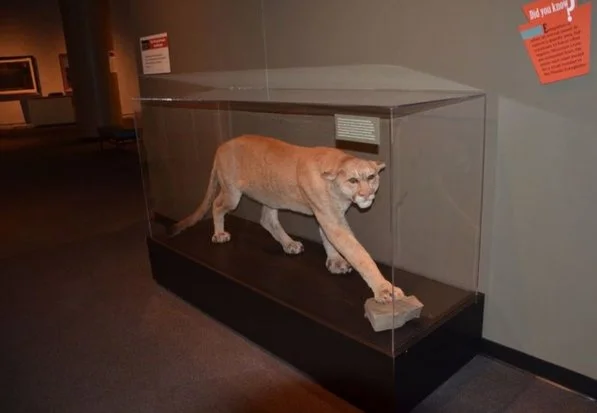Eastern Cougar
(Puma concolor couguar)
The mountain lion, also known as the cougar and puma (amongst several other names), is the second-largest cat in the Americas, surpassed only by the jaguar. Today, it ranges widely from Canada to the southern tip of South America. However, it is notably absent from most of eastern North America, with the exception of the Florida panther, a critically endangered subspecies now limited to South Florida but once found across the Gulf Coast states.
This wasn’t always the case. The Eastern Cougar, a former subspecies of mountain lion, once occupied a vast range from southern Canada to South Carolina. As the region’s apex predator, it primarily hunted white-tailed deer, the now-extinct eastern elk, and even moose, along with smaller animals. European settlers viewed the big cat as a threat to livestock and a competitor for game, and it was relentlessly persecuted. Many states even offered bounties, paying hunters for each cougar killed.
In Pennsylvania, the last confirmed eastern cougar was killed in 1874 in Berks County. The final verified individual of the subspecies was killed in Maine in 1938. Although the eastern cougar was added to the Endangered Species Act in 1973, it was already well beyond recovery by this point. In 2018, the U.S. Fish and Wildlife Service removed it from the ESA and officially declared it extinct.
With the extinction of the eastern cougar, is the story of mountain lions in the East truly over? Each year, hundreds of sightings are reported across the eastern United States, although, it’s highly unlikely that any undiscovered breeding populations still exist and most of these reports are likely cases of mistaken identity or outright hoaxes. However, there have been confirmed visitors.
In 2011, a young male mountain lion was struck and killed by a vehicle in Connecticut. At first, officials assumed it was an escaped exotic pet, but genetic testing told a different story. The cat wasn’t a pet or even a remnant of the eastern cougar, but a western cougar from the Black Hills of South Dakota, meaning it had traveled an astonishing 1,500 miles from its birthplace.
Since then, more western mountain lions have been documented moving eastward, primarily young males dispersing after leaving their mother’s territory in search of their own. In March 2025 though, Michigan confirmed its first sighting of mountain lion cubs in over a century, a promising sign that eastward recolonization may slowly be underway.
Perhaps one day, some of these pioneering cats will find their way back to the Keystone State.
Taxidermy mount of the last confirmed PA mountain lion, killed in 1874 in Berks County, on display at the State Museum of Pennsylvania in Harrisburg.


